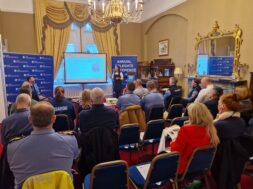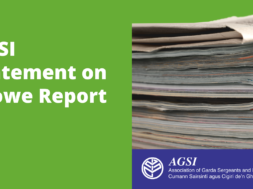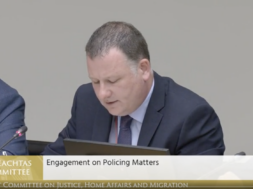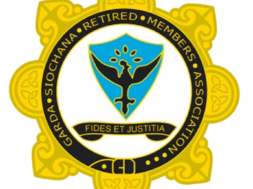· Government accepts in full the findings and conclusions of the report
· Cooke finds that “evidence does not support the proposition that actual surveillance… took place and much less that it was carried out by members of the Garda Síochána.”
· Minister says Report will inform legislative changes relating to GSOC
· Minister calls for new ‘culture of co-operation’ between Gardaí & GSOC
Frances Fitzgerald TD, Minister for Justice & Equality, has welcomed the publication this evening of the report of Judge John D. Cooke on his Inquiry into reports of unlawful surveillance of the Garda Síochána Ombudsman Commission.
The Inquiry was established by Government on February 19th 2014 and approved by a resolution of Dáil Éireann on the same day. The Inquiry was charged with examining the sequence of events and facts leading up to the GSOC’s decision to initiate, in October 2013, a Public Interest Investigation under section 102 of the Garda Síochána Act 2005. The report by GSOC to the then Minister explained that the conclusion of the GSOC investigation under section 102(4) was that it “did not find any definitive evidence that GSOC was under technical or electronic surveillance. It did, however, uncover a number of technical and electronic anomalies that cannot be explained.”
The allegations were first made public in a ‘The Sunday Times’ newspaper on 9th February asserting that the offices of GSOC had been the “target of a sophisticated surveillance operation which used ‘Government-level technology’ to hack into its e-mails, Wi-Fi and phone systems.”
Minister Fitzgerald thanked Judge Cooke for his “comprehensive, evidence-based report and its findings which were both clear and measured. I am very grateful to Judge Cooke for his detailed and authoritative analysis of these issues.”
The Minister stated: “The Government accepts in full the findings and conclusions of the report.”
“It is vital that there is strong public confidence in the Garda Síochána and the system of oversight of the Garda Síochána. That is why it was so important to have an independent and rigorous examination of what were deeply disturbing allegations that GSOC had been subject to surveillance, especially in circumstances where it was suggested that such surveillance might have been carried out by the Garda Síochána.”
Minister Fitzgerald noted the key finding of the report which states: “It is clear that the evidence does not support the proposition that actual surveillance of the kind asserted in the Sunday Times article took place and much less that it was carried out by members of the Garda Síochána.”
The Minister further notes the findings relating to three alleged threats to GSOC.
Firstly, Judge Cooke finds as “not convincing” the accounts that an wireless AV remote control device for audio and video equipment in GSOC (known as device 4B) was connecting and transferring data to an external ‘Bitbuzz’ hotspot in a nearby café. Furthermore, the report found it “highly improbable that haphazard performance of such a… devise constituted the planned means of covert eavesdropping on GSOC in a sophisticated surveillance exercise by any agency equipped with a capability of ‘intelligence service level’”. Judge Cooke goes on to say that “the possibly sinister characterisation attributed to its abnormal behaviour appears now to warrant reconsideration in view of the fact that: a) it was not microphone enabled as had been assumed; and b) its original default password was publicly available and had not been changed.”
Secondly, Judge Cooke finds that the alleged fake UK 3G network (thought to be an IMSI catcher intended to facilitate the tracking and interception of mobile phones) which was detected on an iPhone as operating in the vicinity of GSOC’s offices was “highly likely” to have been caused by the testing of a new 4G installation by a mobile provider. The mobile phone company explained to Judge Cooke that in September/October 2013 it was testing equipment for its new 4G/LTE service in a number of locations in Dublin, including one close to Upper Abbey Street, where GSOC’s premises are located. These tests included connecting to the group’s test bed in the UK, and the particular detected 5 digit country/network code was one that was allocated exclusively to that test bed and would have been generated only by communications with the test bed. The company considered it likely that these tests may have caused the detection of the code. Mr Justice Cooke concludes that, having regard to this explanation, “it is clearly more probable that the iPhone scan detection of the country/network code was not caused by the presence in the vicinity of the offices of an IMSI catcher.”
Thirdly, Judge Cooke challenges some of the statements in relation to the anomaly of a ‘ring-back’ to a ‘polycom’ teleconferencing device, which followed an alerting test being conducted on the device. While Judge Cooke notes the view that the ring-back could be explained by a careless monitoring agent unthinkingly intervening to phone the extension, he finds that this attribution of the occurrence to human error would appear, on the face of it, to be somewhat at variance with the premise that GSOC was being subjected to a sophisticated surveillance attack which was characterised as at intelligence service level. Judge Cooke finds that this ring-back remains unexplained as a technical or scientific anomaly. Whatever the explanation may be, Mr Justice Cooke concludes that “there is no evidence that the ring-back reaction was necessarily attributable to an offence or misbehaviour on the part of a member of the Garda Síochána.”
Judge Cooke does make the point that in the world of covert surveillance and counter-surveillance techniques it is ultimately extremely difficult to determine with complete certainty whether unexplained anomalies were or were not attributable to unlawful intrusion. Judge Cooke acknowledges that further tests and investigations might be conducted with a view to finding explanations for the anomalous behaviour of the wireless device and the polycom unit, but concludes that “having regard to the absence of evidence that the anomalies in question were in fact exploited for the purpose of illicit surveillance and to the fact that their threat potential has since been eliminated it may be questionable whether such further investigations would be justified.”
In his recommendations, Judge Cooke makes the point that any vulnerabilities identified in GSOC’s offices, equipment and technologies should be addressed and rectified, and he is satisfied steps taken by GSOC since September 2013 are adequate to rectify the defects and vulnerabilities and sufficient to enhance the security of the relevant areas and the equipment used in them.
Judge Cooke recommends that GSOC should more frequently carry out a thorough and suitable counter-surveillance examination of its offices, communication and IT equipment and data storage facilities to ensure that its protection remains adequate and that the risk of new surveillance techniques being deployed against GSOC or its personnel is reduced as much as possible.
Judge Cooke recommends that the precise scope of GSOC investigations under section 102(4) of the Garda Síochána Act 2005 could be clarified in any revision of the legislation, and that it may be desirable, in the context of the proposed legislation to establish the independent Garda authority, to consider simplifying some of the provisions in the 2005 Act relating to the making, admissibility and investigation of complaints.
Responding to the report generally, Minister Fitzgerald noted that “this Government is implementing a comprehensive programme of reform in the areas of policing and justice in Ireland, including on foot of the Guerin Report.”
“As part of this programme of change, I am committed to bringing forward new legislation to reform, strengthen and clarify the remit and operation of the Garda Síochána Ombudsman Commission, so as to ensure it is fit for purpose and to further ensure that the men and women of an Garda Síochána, as well as the wider public, can have the fullest confidence in its workings.”
The Minister added that “the Cooke Report will inform how we will proceed with our reforms.”
The Minister outlined a number of specific responses to the Cooke Report:
· The proposed new bill to reform the workings of GSOC will clarify the legal basis under which GSOC can initiate a Public Interest Investigation as well as the thresholds for initiating such an investigation;
· The proposed new bill will further clarify and strengthen the provisions relating to the preparation and implementation of protocols relating to cooperation between Gardaí & GSOC.
· The Department of Justice & Equality will carry-out an examination of the resources available to GSOC.
· Both GSOC and the Garda Commissioner will be asked to provide a response to the Cooke Report.
· The Cooke Report will be referred to the Oireachtas Joint Committee on Justice, Defence & Equality for further consideration and discussion.
The Minister concluded by calling for a new ‘culture of co-operation’ between Gardaí & GSOC, stating: “Working together and sharing information are issues which require more than just protocols and legislative change. What is required is a shift in approach and the embedding of a real and effective culture of co-operation As Minister I will work with both bodies to facilitate and foster this change.”
10 June 2014
ENDS









